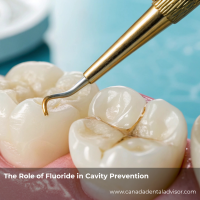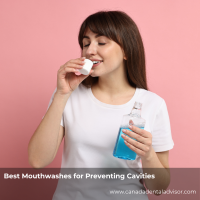Why Personalized Care Plans Matter
Imagine two patients: one enjoys smoothies packed with berries, the other smokes occasionally and loves strong espresso. Should they follow the same post-whitening care plan? Definitely not.
Personalized care plans take into account:
-
Dietary habits
-
Existing dental conditions (like enamel erosion or gum sensitivity)
-
Lifestyle factors (smoking, drinking, stress)
-
Whitening method used (in-office vs. at-home)
By understanding these variables, dental professionals can provide tailored advice that maximizes the results of whitening treatments and makes it easier for patients to follow through.
Enhancing Treatment Outcomes
Whitening treatments are not one-size-fits-all. For example:
-
Patients with enamel erosion may need gentler whitening options and remineralizing toothpaste.
-
Those with sensitive teeth might benefit from a fluoride-based rinse or shorter whitening sessions.
-
A custom follow-up plan can include desensitizing treatments or special toothpaste to prolong the effects of whitening.
By customizing the approach, dentists can reduce side effects like sensitivity and make whitening results last longer.
Boosting Patient Compliance
Let’s face it—general advice like “avoid staining foods” often gets ignored.
But when a patient hears, “Since you drink matcha daily, try sipping it through a straw and rinsing right after,” it feels more manageable.
Here’s how personalization improves compliance:
-
Specific, relatable tips feel more achievable.
-
Visual tools like before-and-after photos help patients stay motivated.
-
Routine check-ins encourage accountability.
Patients are more likely to follow care plans when they feel the plan was designed for them, not just handed out generically.
Fostering Long-Term Oral Health
A well-maintained smile is about more than aesthetics.
Patients who invest in teeth whitening often become more motivated to care for their teeth overall. Individualized plans can encourage this by:
-
Introducing new oral hygiene tools (like electric toothbrushes or whitening-safe mouthwashes).
-
Addressing underlying issues (such as gum disease or grinding) that might impact whitening results.
-
Scheduling routine cleanings and touch-ups that keep both smile and mouth healthy.
The shift from cosmetic improvement to holistic dental care is powerful and lasting.
Real-World Success Story
Take Jason, a frequent traveler and coffee lover. After whitening, his dentist noticed minor staining reappeared during check-ins.
Rather than scolding, the dental team adjusted his care plan:
-
Suggested travel-sized whitening touch-up pens.
-
Recommended a remineralizing mouthwash.
-
Created a simple “travel oral care kit.”
The result? Jason maintained his bright smile and felt cared for—not lectured.
Everyday Tips for Whitening Maintenance
Even the best care plan needs patient effort. Here are simple, expert-backed habits to protect your glow:
-
Use a whitening toothpaste with low abrasiveness.
-
Avoid staining foods or rinse right after consuming them.
-
Brush and floss daily to prevent plaque buildup.
-
Drink water often to wash away pigments.
-
Get regular dental checkups and cleanings.
-
Limit acidic foods and drinks to protect enamel.
Conclusion: A Smile That Lasts a Lifetime
Maintaining a bright smile isn’t about perfection—it’s about consistency. When dental professionals offer care plans tailored to individual needs, patients are empowered to take better care of their teeth, feel more confident, and build habits that support long-term oral health.
Whether you’re sipping coffee or jetting off on business trips, a customized whitening maintenance strategy can keep your smile as brilliant as the day you left the dentist’s chair.
FAQ: Teeth Whitening Maintenance
1. How long do teeth whitening results typically last?
With proper care, whitening can last from six months to two years. Maintenance is key.
2. Can I drink coffee after teeth whitening?
Yes, but try to use a straw and rinse your mouth with water afterward.
3. Are whitening toothpastes safe for daily use?
Most are safe if used as directed. Choose low-abrasive formulas recommended by your dentist.
4. How often should I get touch-up treatments?
Every 6–12 months, depending on your diet and oral care routine.
5. Does sensitivity after whitening go away?
Yes, typically within a few days. Desensitizing products can help.
6. Can I whiten my teeth if I have fillings or crowns?
Whitening doesn’t affect restorations, so they may need to be replaced to match.
7. Is it okay to smoke after whitening?
Smoking can quickly stain teeth again. Consider reducing or quitting for best results.
8. What foods should I avoid post-whitening?
Avoid dark berries, soy sauce, red wine, and soda for the first few days.
9. How can I tell if a whitening product is safe?
Look for ADA approval and consult your dentist.
10. Should I tell my dentist about over-the-counter products I use?
Absolutely. Your dentist can help you avoid ingredients that may irritate or harm your teeth.











Leave a Reply